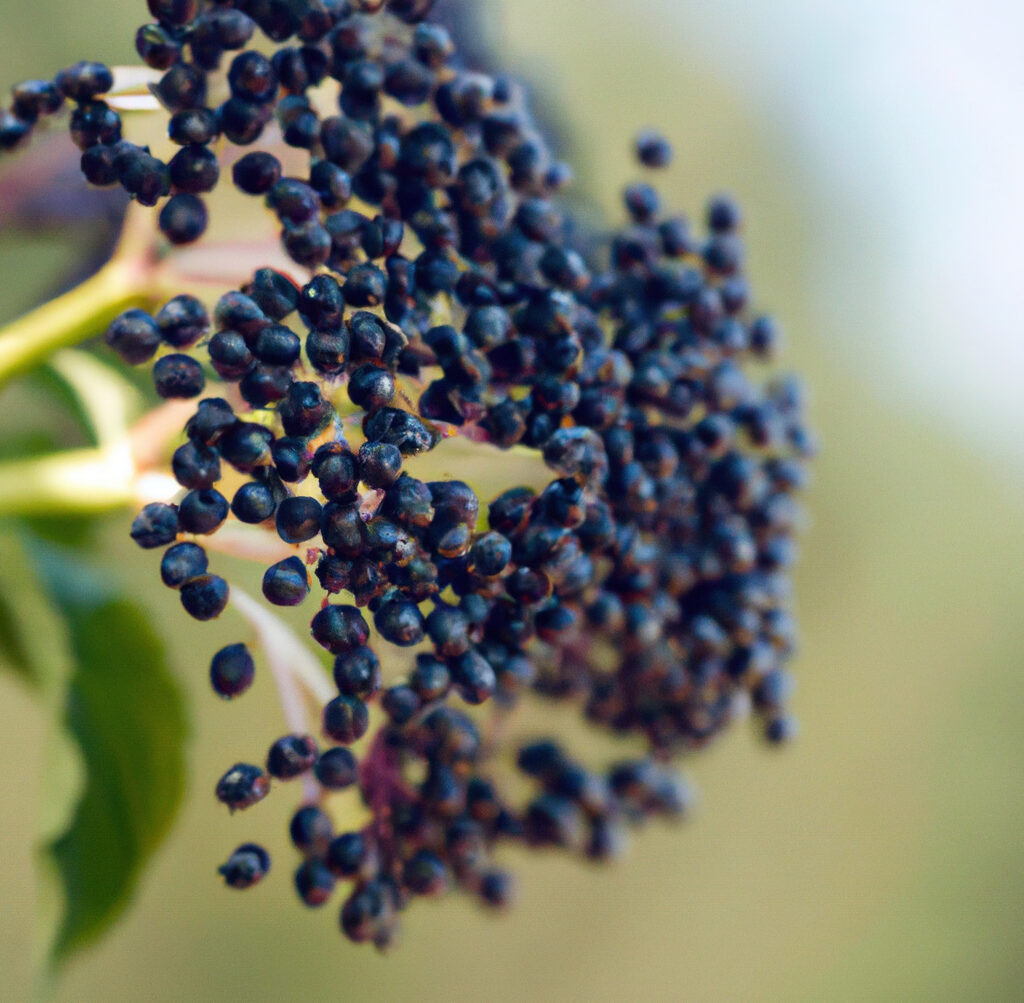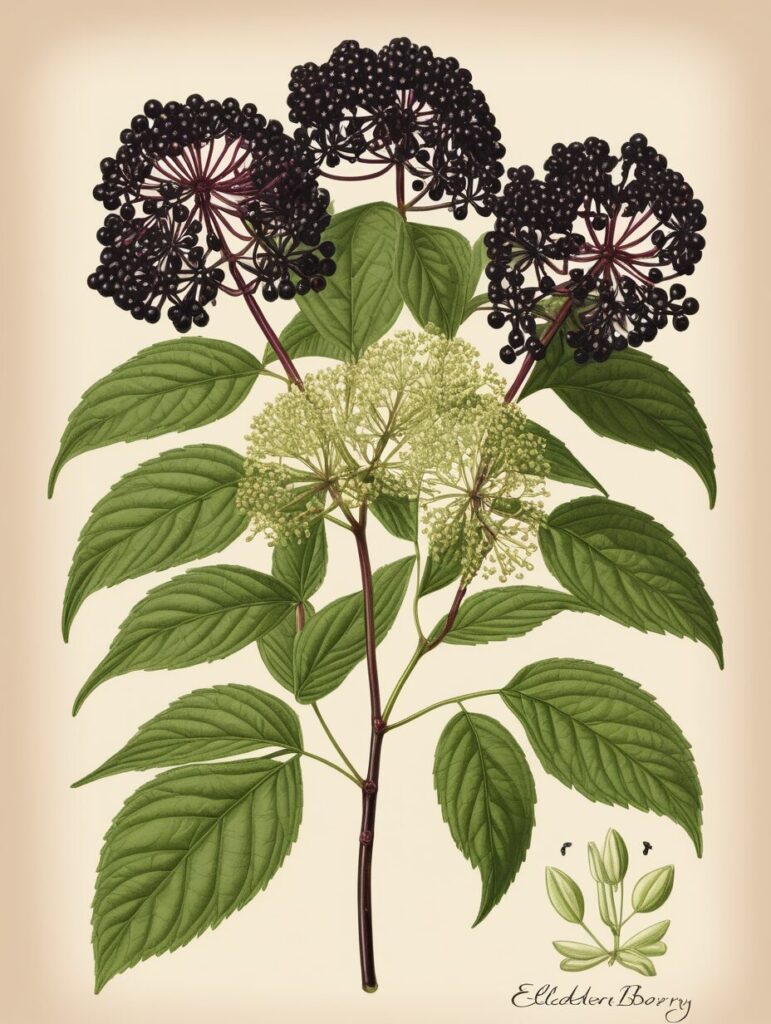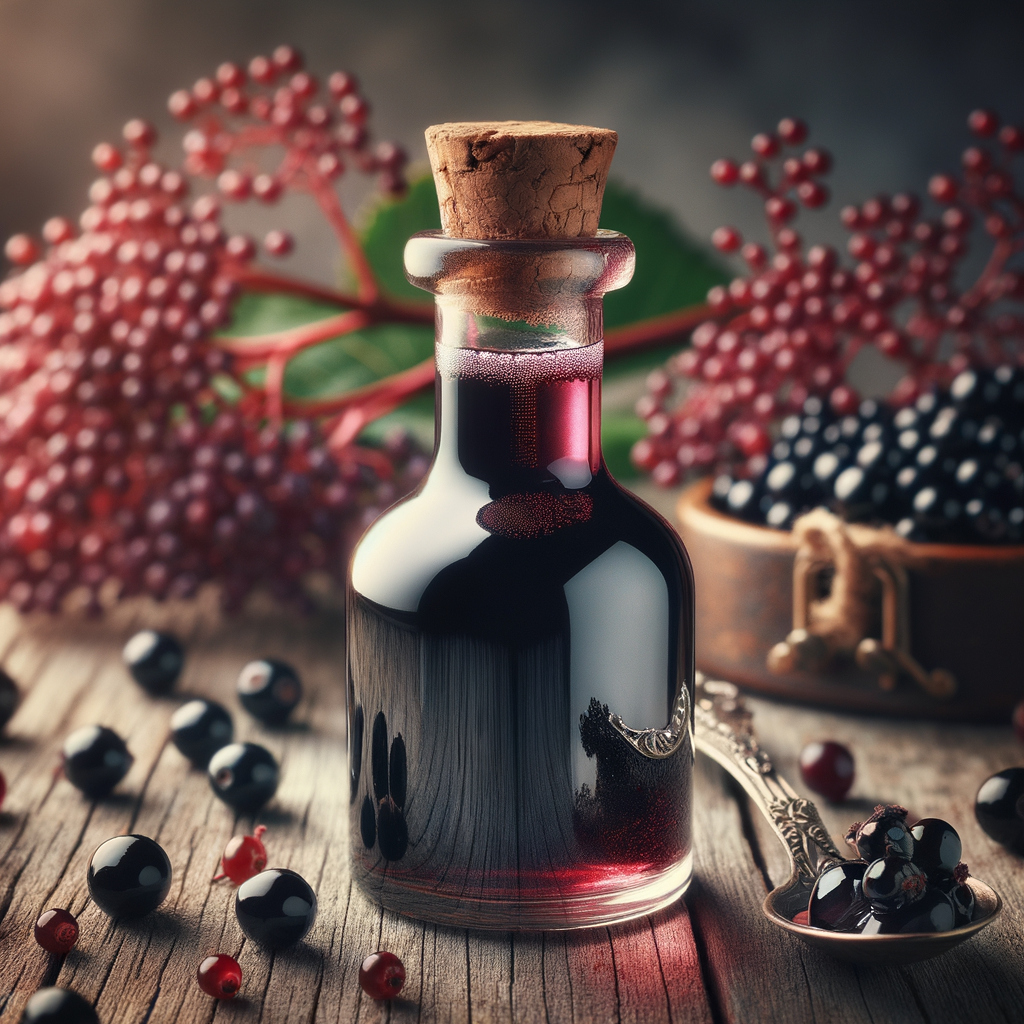Elderberry, with its vibrant clusters of berries, has long enchanted those who seek not only its deep, sweet taste but its powerful health benefits. To deepen the relationship between myself and this ancient botanical, I began crafting a yearly batch of elderberry syrup. By incorporating other natural sources of Vitamin C, such as rosehips and hibiscus, into the syrup following the cooking process, I could enhance its efficacy, especially during the cold and flu season. Vitamin C, known for being water-soluble, dissolves in water but does not store well in the body, necessitating a continuous dietary intake. However, Vitamin C is sensitive to heat, losing potency with prolonged exposure to high temperatures. For this reason, incorporating additional Vitamin C-rich herbs into elderberry syrup post-cooking retains more nutrients, making the blend both potent and beneficial.



Vitamin C plays multifaceted roles within our bodies—it bolsters collagen production, heightens immune response, and aids in non-heme iron absorption, crucial for those consuming plant-based diets. Yet, commonly used Vitamin C supplements often contain synthetic ascorbic or citric acid rather than the complex whole Vitamin C found in nature. This is where understanding the complexity of natural nutrients becomes imperative, prompting a preference for consuming vitamins as nature intended.
A staggering number of people rely on Vitamin C supplements worldwide. A report by the National Institutes of Health and studies including the Council for Responsible Nutrition reveal Vitamin C’s status as among the most popular dietary supplements consumed globally. Despite their popularity, the efficacy and health merits of synthetic vitamins remain contestable, especially considering the possible side effects.
As I consult with clients facing urinary or renal issues, the first question often revolves around supplement intake, given that excessive consumption of ascorbic and citric acid from supplements can lead to hyperoxaluria—a condition precipitating kidney stones. IMHO, It is necessary to consume whole C directly from nature’s sources, equipped with co-actors called enzymes, catalyzing vital biochemical reactions like collagen stabilization. True Vitamin C maintains synergy with enzymes such as prolyl hydroxylase and lysyl hydroxylase, crucial for collagen production, a process that strengthens skin, bones, and connective tissues.
Interestingly, synthetic ascorbic and citric acids can be derived from fungi like Aspergillus, a species notorious for causing respiratory issues. Despite being considered ‘safe’ for industrial use, these methods raise concerns, particularly when compared to sourcing Vitamin C from natural fruits and herbs. Misunderstandings surrounding nutrient complexities and the body’s interactions with synthetic versus naturally-derived compounds linger due to ongoing research, often revealing more about what we don’t know than what we do.
There exist tens of thousands of phytonutrients, plant compounds essential for health, yet only a small fraction have been identified and understood. Also, we are just beginning to unravel how the human gut microbiome—a complex network of microorganisms—plays a critical role in digestion and nutrient absorption. As understanding evolves, the importance of consuming a diverse diet rich in whole foods becomes ever more apparent, ensuring a wide array of nutrients are provided, some of which remain scientifically unexplored.
The story of elderberry aligns with that of Vitamin C as we explore their roles in human health, highlighting how interconnected natural elements profoundly influence our well-being. While laboratory synthesis of nutrients can mirror these natural processes, it often pales when compared to nature’s adept complexity in nutrient delivery, reminding us of the wisdom embedded within the natural world.
Elderberry (Sambucus) possesses a compelling narrative. This deciduous shrub, standing between 5-12 feet tall, exhibits bushy foliage with elliptic, toothed leaves and clusters of fragrant white flowers that eventually give way to rich, dark berries. These berries, teeming with antioxidants and flavonoids, support immune function, a property utilized for centuries through culinary preparations like jams, syrups, and teas. Known to combat respiratory viruses and bolster defenses, elderberry’s innate antiviral properties make it an esteemed ally during seasonal illness spikes.
Beyond immune support, anthocyanins within elderberry help reduce inflammation and foster cardiovascular health. Studies suggest that elderberry may enhance blood circulation and promote heart health, each berry concentrating nature’s potent blend of health-promoting phytochemicals. However, elderberries must be cooked to neutralize naturally occurring cyanogenic glycosides, ensuring safety and enhancing their health benefits.
Historically, elderberry has been revered in traditional medicine, prized for its role in combating colds and flu, evidenced through countless folk recipes and modern evaluations. Contemporary science corroborates many traditional uses, validating elderberry’s potential to sustain immune health and contribute meaningfully to cardiovascular wellness. Elderberry’s richly pigmented, anthocyanin-laden berries stand as a formidable source of antioxidants, vitamins, and minerals, vital for holistic health.

When blended thoughtfully, elderberry can be enriched by adding echinacea for immune modulation, rosehips for additional Vitamin C, and ginger for its anti-inflammatory properties, creating a nutrient-dense infusion. This therapeutic mix provides an array of flavors and an immune-supportive punch, proving invaluable during the colder months.
Elderberry’s traditional potency is mirrored by scientific revelations concerning its cross-kingdom signaling with the yeast Saccharomyces boulardii. This beneficial yeast, when symbiotically associated with elderberry plant roots, forms biofilms, enhancing plant resilience against pathogens. The release of enzymes by the yeast makes soil nutrients more accessible, fostering elderberry’s robust growth, a fine illustration of nature’s intricate synergy.
For those interested in introducing Saccharomyces boulardii to elderberry cultivation, a simple inoculation recipe follows:
1 probiotic capsule containing Saccharomyces boulardii
1 gallon of water
1 cup of organic honey
- Crush the probiotic capsule to release its contents.
- Combine the crushed probiotic, water, and honey in a large container, mixing well.
- Allow to sit at room temperature for 24-48 hours for the fermentation process.
- Use this mixture as a soil drench to encourage robust elderberry growth.
Elderberry Syrup Recipe:
1 cup dried elderberries
4 cups water
1 cinnamon stick
1-inch fresh ginger, sliced
1/2 cup raw honey
Optional spices: cloves or star anise
- Combine dried elderberries, water, cinnamon, ginger, and optional spices in a saucepan.
- Bring to a boil and simmer for 30-40 minutes until the liquid halves.
- Let cool slightly, mash the berries, and strain through a sieve to extract juice.
- Once cooled to room temperature, dissolve in raw honey.
- Store in a sealed glass bottle in the refrigerator, use within several months.
Whether in syrup, tincture, or tea, elderberry continues to be a cornerstone of nutritional and medicinal practices, speaking to nature’s enduring wisdom and our role in preserving and utilizing these natural treasures. As our understanding deepens, the relationship with elderberry serves as a metaphor for growth and discovery, encouraging respect and balance, ensuring nature’s ancient dance continues for future generations.




